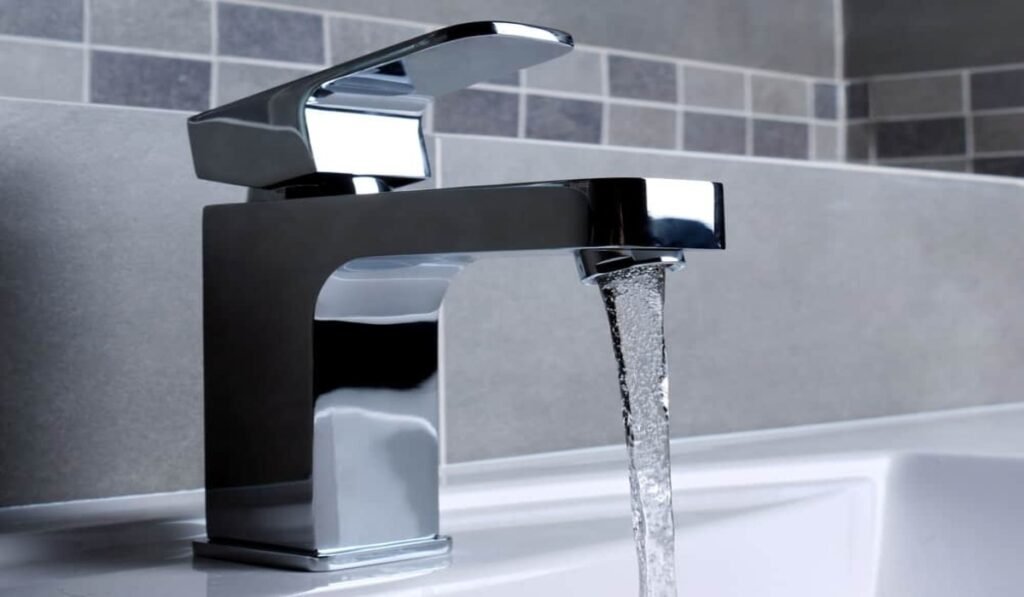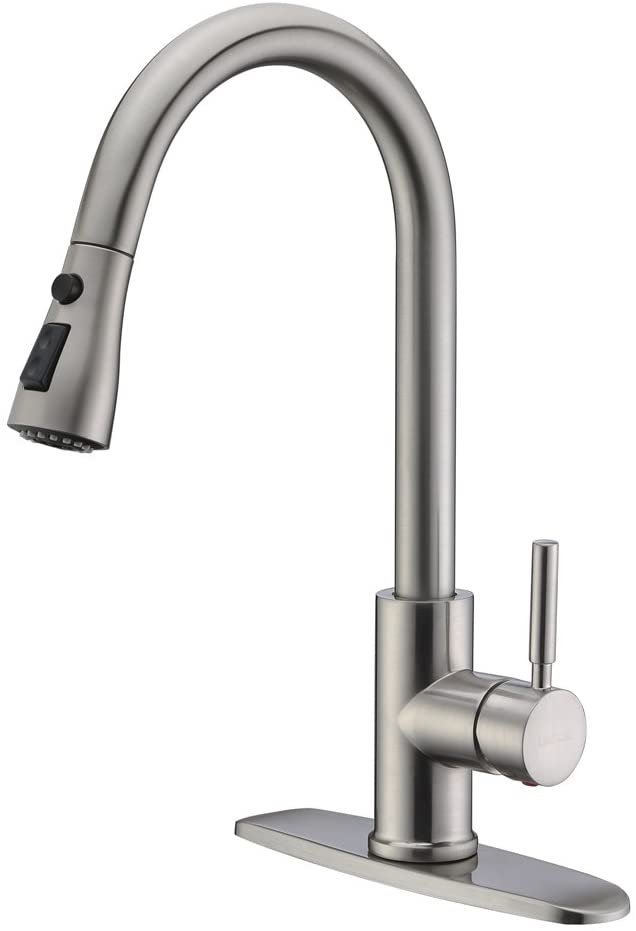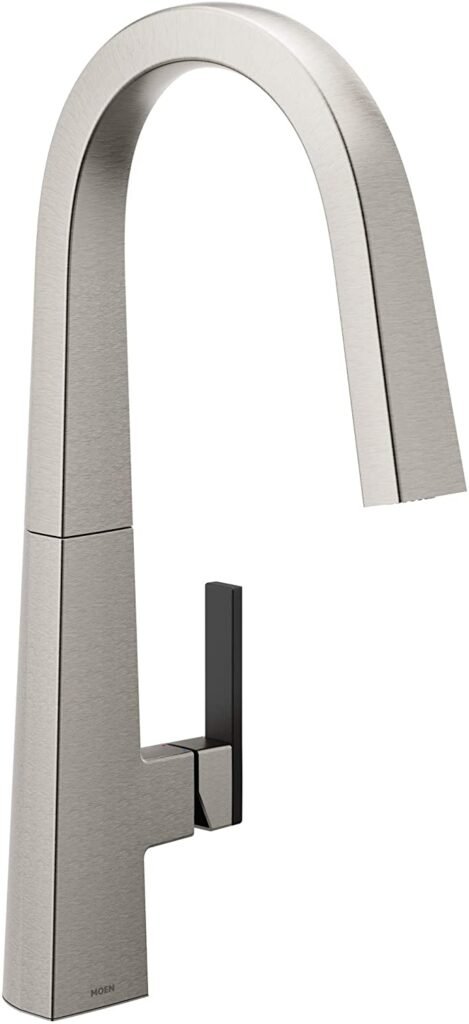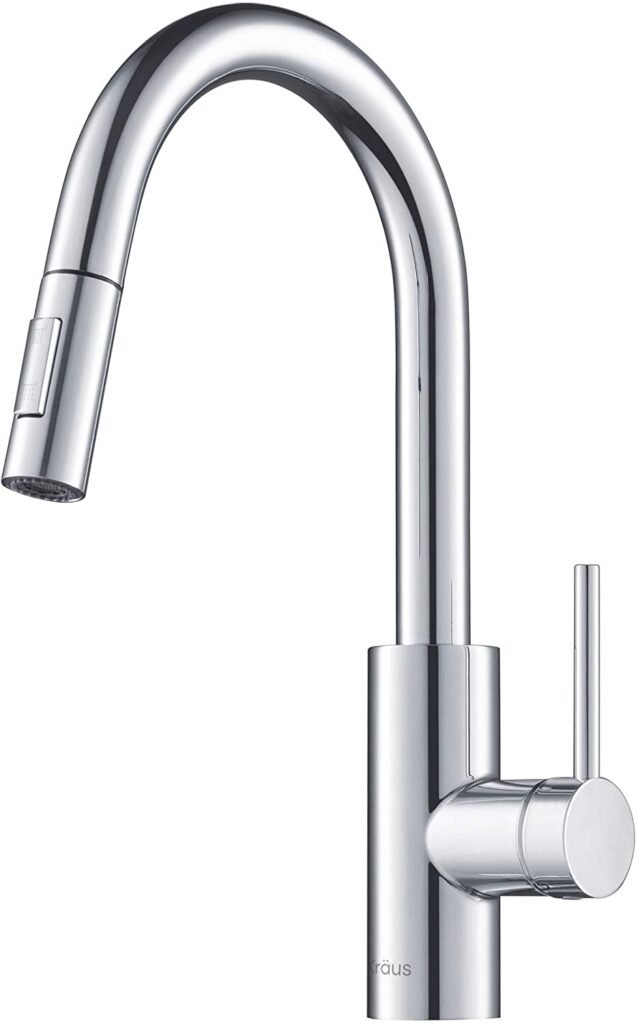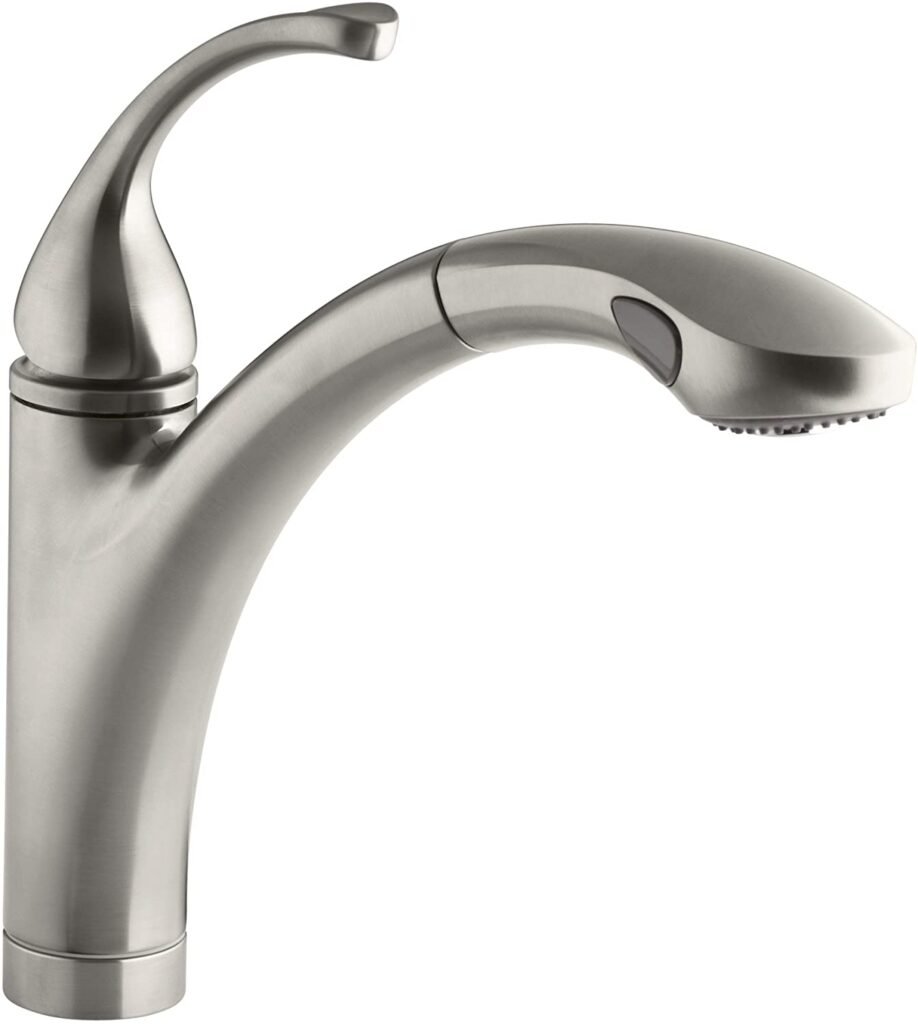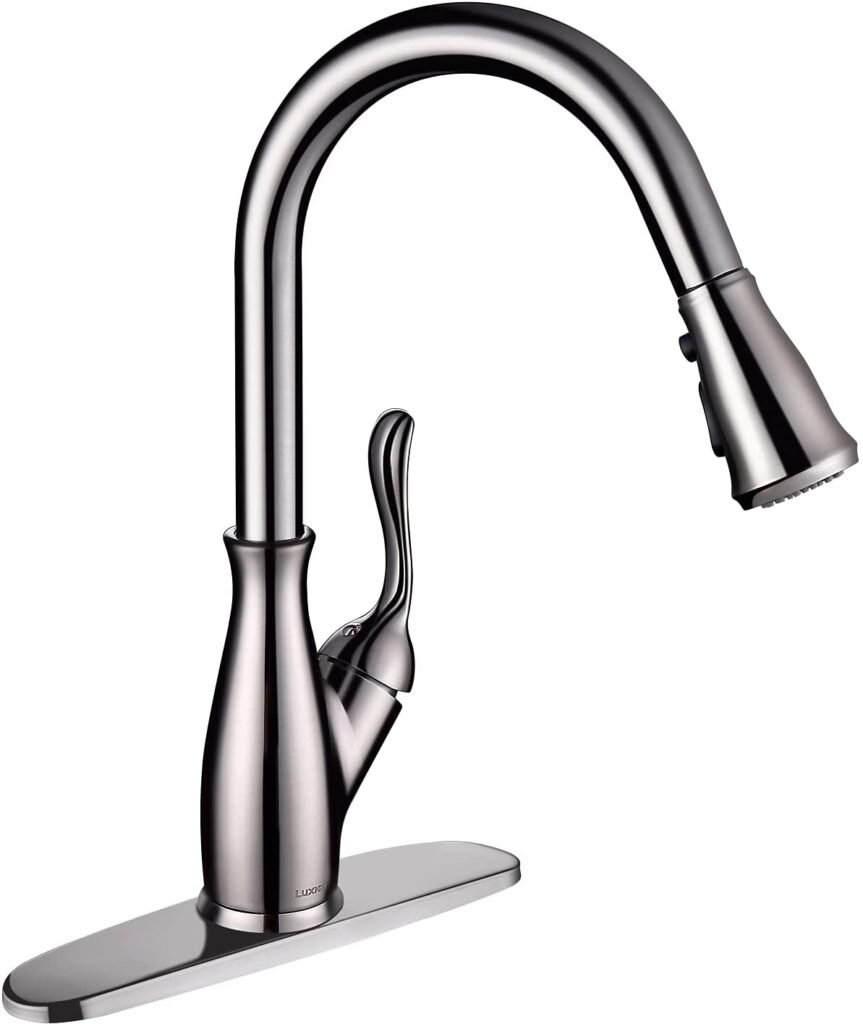Water from your kitchen faucet cleans your food, your dishes, and your hands. It’s the heart of the kitchen, and deserves to be treated as such. The best kitchen faucets are the perfect marriage of form and function, looking great and working flawlessly year after year. Follow this easy guide to get your fill on finding the right faucet. With so many options available, selecting a kitchen faucet can be overwhelming. While your final decision ultimately depends on personal style, knowing some basic information makes the process a little easier.
Do you need a high-arch spout to accommodate large cookware? Do you prefer to operate the faucet with a single handle or two handles? Choose a pullout or pull-down model for all-in-one function, or select a wall-mount faucet to keep the countertop clear. Many models are available in multiple sizes to pair with different sink sizes and kitchen task areas.
Known for their lithe design, single-hole kitchen faucets feature hot and cold connections at the bottom of the spout with the valves in the body. Single handle styles are most common, but two-handle single-hole faucets are available too. While contemporary and modern designs are most common, you’ll find a few traditional looks to consider as well.
If you are regularly washing large pots and pans, you want to make sure that your faucet is not only beautiful, but functional as well. Selecting a faucet with a tall, curved neck will provide ample room to access the sink and allow you to rinse large items thoroughly.
Consider how your sink is used and determine if one or two handles is the best option for you. Kitchen faucets commonly feature one handle that rotates to adjust water temperature. However, it is usually easier to regulate and control water temperate with two separate handles. While two-handle faucets have more style options.
INSTALLATION OPTIONS
Deck-mount faucets rest directly on the countertop. These faucets provide an appealing look that is well-suited to any design style.
A deck-mount faucet will occupy space on the countertop, so make sure that your area is large enough to accommodate your selection. Dirt or water may accumulate between the faucet and the wall. Leaving at least a finger width behind the faucet will provide ample room for cleaning.
Wall-mount faucets are mounted to the wall above the sink. These faucets are a great option if you want to preserve countertop space and provide for effortless cleanup. Installing a wall-mount faucet may require relocating your existing plumbing and should be completed by a professional. When selecting a wall-mount faucet, it is important to take into account the distance the water spout projects to be sure that the sink and faucet are compatible.
Faucet spouts vary so it’s important to pick the one that gives as much ease as other areas of your home. While the classic straight-spout faucet with a side sprayer is always a respectable choice, the latest faucets feature space-saving pull-out or pull-down spouts with large ranges of motion.
Faucet Materials
Brass: This metal is easy to cast and incredibly durable. It resists corrosion and can be easily plated with a wide range of finishes. In more affordable faucets, tubular brass is used in place of cast brass, and it is not as strong or durable. Some brass faucets contain lead, so look for a faucet certified to contain no lead or to have a certified safe lead content. The packaging will contain an NSF 61/9 symbol referring to the National Sanitation Foundation certification code for lead-free faucets.
Stainless steel: There is no lead in stainless steel faucets, so it is an appealing choice. Plus, stainless looks great and resists corrosion. Better grades of stainless steel include 304 stainless with 18% chromium and 8% zinc. It’s also called 18/8 stainless steel; 18/10 material is used in some faucets too. Cheaper grades of stainless steel can be brittle or weak.
Zinc: More affordable faucets are often made of zinc or alloys with zinc as the primary metal. It’s lightweight but not very strong or durable. Some brass faucets are outfitted with cheap zinc or zinc alloy handles, so that’s something you’ll want to pay attention to if that is a concern.
Plastic: The cheapest kitchen faucets feature plastic construction that is light and inexpensive, but lacks durability. The best plastic for faucets is known as PEX, a type of polyethylene. Other plastics should be avoided.
ORKK TOP SUGGENTIONS :
